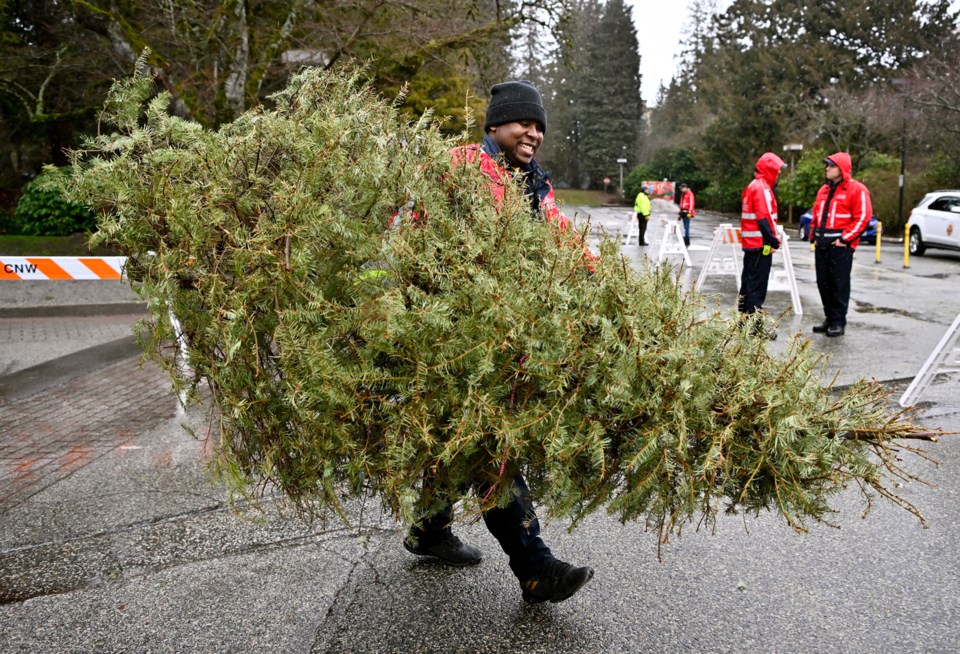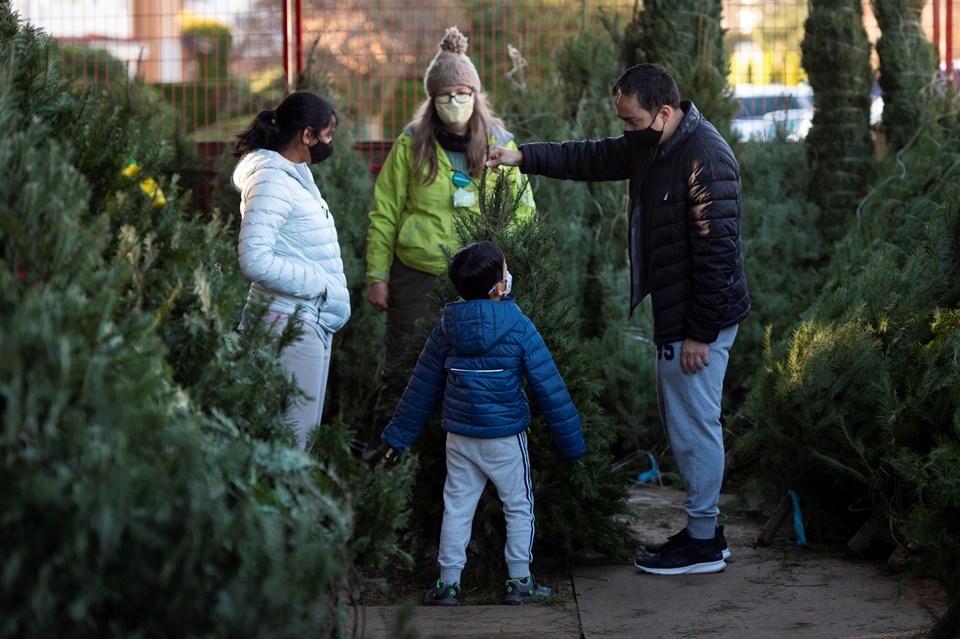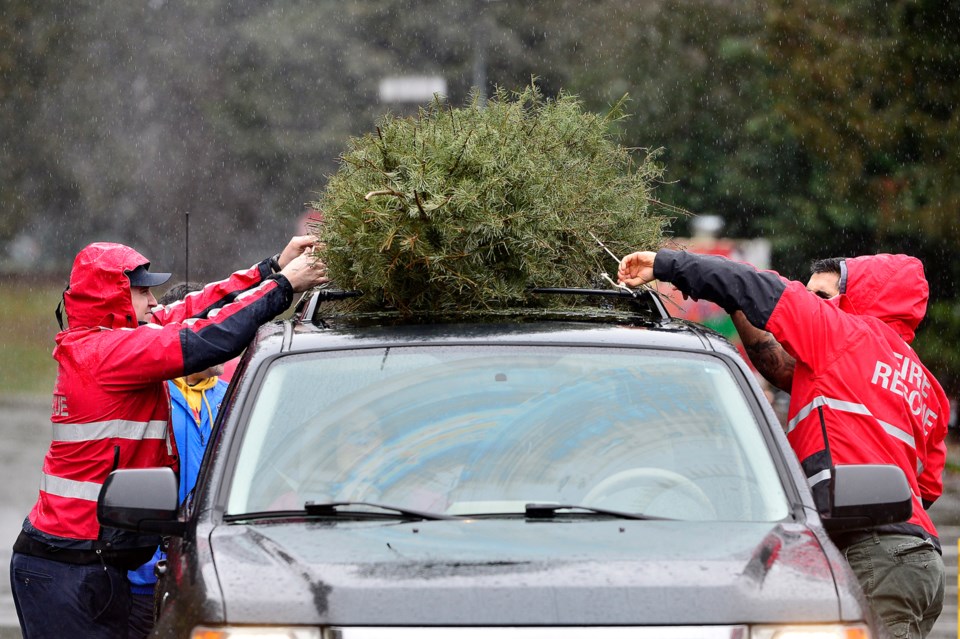Plastic or freshly cut? For some, the perennial Christmas tree debate is a balancing act of convenience and aesthetic preference. For others, figuring out whether an artificial or natural tree is more eco-friendly matters at a time when they are trying to minimize their carbon footprint.
While the choice might seem inconsequential, small choices can have an impact, says Johan Foster, a professor in the University of British Columbia’s Department of Chemical and Biological Engineering studying biodegradability and plastics.
“I think it’s an interesting debate,” said Foster. “There’s not an easy answer.”
Which tree is more sustainable depends on a number of factors, like how long you keep a plastic tree, how far a cut tree travels to arrive in your living room, and how it's disposed of after the holidays.
Over the years, experts who calculate the lifecycle carbon of things have attempted to quantify which is better for the environment — often coming up with wildly different numbers.

Plastic vs. wood research shows mixed results
In a 2009 , a group of Montreal engineers compared a seven-foot natural tree planted and harvested 150 kilometres away from the city with an artificial one of the same size manufactured in China and shipped by boat and train via Vancouver.
They considered all the water, fertilizers and pesticides that went into growing and maintaining the natural tree, as well as the waste it produced after it was burned or recycled in a landfill. Analysis of the artificial tree, meanwhile, looked at everything from the manufacturing of plastic needles and metal branches to overseas transport. Final disposal of the plastic tree was assumed to be six years after purchase, the average time an artificial tree was then kept in North America.
The results were mixed. The study found the plastic tree had almost four times less impact on ecosystem quality compared to a cut natural tree. But when it came to climate impacts and resource depletion, the artificial tree was found to be three times worse than the natural tree.
An estimated 85 per cent of the artificial tree’s negative impact on climate came from manufacturing, while eight per cent came from shipping it from China to Montreal.
The researchers estimated someone would have to keep an artificial tree for 20 years before it became a better solution for climate change.

Other research has come to an opposite verdict.
A 2018 sponsored by the , which represents the artificial tree industry, measured the environmental impacts of a nearly two-metre artificial tree shipped from China, versus growing, transporting and maintaining a similar natural tree in the southeastern United States.
The environmental break-even point between an artificial tree versus a natural tree was 4.7 years, according to the consulting company that produced the report.
Their conclusion: buying an artificial tree and keeping it for five years is “less environmentally impactful than purchasing the equivalent amount of real Christmas trees.”

For a Christmas tree shopper, eventually, those numbers will go away and they’ll be left with a personal choice.
“I prefer a live tree. Why? My parents always had live trees,” said UС����Ƶ's Foster, who grew up in McBride, С����Ƶ “We drove a kilometre down the road, tromped down the bush and grabbed a Christmas tree.”
If people choose to go the artificial route, Foster recommends not getting one every year.
“Keep it for several years. Keep it out of the sun so the plastic doesn’t degrade. It should last a decade, two decades,” he said.

For Kai Chan, a professor at UС����Ƶ’s Institute for Resources, Environment and Sustainability, it’s great that people are concerned about the impact of a Christmas tree. But he said the whole plastic-versus-natural debate is a distraction from the bigger problem of overconsumption during the holidays.
“Ultimately, the amount of attention this gets is just way more than it merits in the face of the magnitude of the problem we’re facing,” he said.
Chan said the reason we keep having a debate over plastic and cut trees is because of pressure from industry advertising.
“One side is saying one thing, the other side is saying another thing. Both are saying buy more stuff,” he said. “Far less frequently are we hearing about how we could change our own families in how we celebrate Christmas.”
Is there another option?
About five years ago, Marshall Hayward was frustrated by the debate over live and plastic trees. Out of nowhere, someone told him how some Europeans were opting out of buying a tree. He thought to himself, why not here?
In the years since, his seasonal side hustle — known as — has expanded to include events and weddings. Based in Victoria, С����Ƶ, the business’s website allows customers to pick out a potted tree to rent for the holiday season.
From an apartment-sized Norway spruce to a large, decorated Douglas fir, a potted tree rental costs between $75 and about $250. That’s not far off the rising cost of a typical cut Noble, Northern or Fraser fir, which can cost up to $180 this year, according to С����Ƶ Christmas Tree Association president Paul Huesken.
“The money is fine. But it’s just impactful. It’s reducing the carbon impact,” Hayward said. “It’s letting the tree live. It just feels good.”
Hayward said he and his partner have delivered trees all over south Vancouver Island and Metro Vancouver. He said he’d like to expand to serve the whole Fraser Valley. While demand fluctuates every year, with some requests as far away as Calgary, Hayward said the idea of renting out a Christmas tree appears to be growing.

In Vancouver, the company offers a similar potted-tree delivery service, while in Surrey, offers live, potted and decorated Christmas trees. Similar operations have popped up across North America — from in Edmonton to in the San Francisco Bay area.
Justin Sudds, who purchased Evergrow last year with his sister Julie, said so far this year they have delivered about 450 trees across Metro Vancouver. While slightly more expensive than cut trees, the Tsawwassen resident said price is not the main barrier to people renting a live tree.
“Going out to get a tree is a tradition. This is a bit different,” he said. “I just don’t think people know they can get a live tree, let alone a live tree delivered to your house.”
So far, Evergrow's biggest customers have been people who live in condos, who don’t have a car or who are older and struggle to pick up a tree. Sudds says he sees a future where more people turn to live trees, and as that happens, he and his sister have plans to expand across Canada.
Back at a rented Victoria-area farm, Hayward said his trees are getting a bit heavier every year.
“We track them. We give the same tree to the same family. We have to up-size the pot every year as they grow another six inches,” he said.
Hayward said some people aren't worried about the size, including one of his Vancouver customers, who asked to have a 12-foot live tree dropped into their front yard. Hayward had to rent a crane to move the tree, which quickly became a perch for some local birds.
At some point, the trees will become too big to lug around. That's when Hayward said the pot would come off and the trees would be ushered into retirement.
“You got to let it live out its life,” he said. “You got to release it into the wild.”
With files from Adam Campbell



